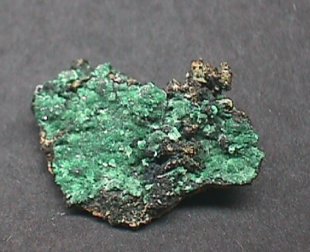Science Lesson Plan
Grade 4

Key Concepts:
- Describe what minerals and rocks are.
- Give examples of the uses of minerals and rocks.
Step 1: Sunshine State Standard
D. Processes that Shape the Earth
1. The student recognizes that processes in the lithosphere, atmosphere, hydrosphere, and biosphere interact to shape the Earth. Earth materials are solid rocks and soils, water, and the gases in the atmosphere.
Benchmark SC.D.1.2.1 -The student knows that larger rocks can be broken down into smaller rocks, which in turn can be broken down to combine with organic material to form soil.
Sample Performance Descriptions SC.D.1.2.1.a Achievement of the benchmark may be demonstrated when the student with other student investigates properties of rocks and minerals. The student then develops systems to group minerals and rocks into sets that have similar properties and reports findings
Project 2061 Benchmarks Chunks of rocks come in many sizes and shape, from boulders to grains of sand and smaller.
Describing things as accurately as possible is important in science because it enables people to compare their observations with those of others. Objects can be described in terms of what they are made of and the physical properties (color, size, shape, weight, texture, flexibility, etc.) People can find out a group of things by studying just a few of them.
D. Processes that Shape the Earth
1. The student recognizes that processes in the lithosphere, atmosphere, hydrosphere, and biosphere interact to shape the Earth. Earth materials are solid rocks and soils, water, and the gases in the atmosphere.
Benchmark SC.D.1.2.1 -The student knows that larger rocks can be broken down into smaller rocks, which in turn can be broken down to combine with organic material to form soil.
Sample Performance Descriptions SC.D.1.2.1.a Achievement of the benchmark may be demonstrated when the student with other student investigates properties of rocks and minerals. The student then develops systems to group minerals and rocks into sets that have similar properties and reports findings
Project 2061 Benchmarks Chunks of rocks come in many sizes and shape, from boulders to grains of sand and smaller.
Describing things as accurately as possible is important in science because it enables people to compare their observations with those of others. Objects can be described in terms of what they are made of and the physical properties (color, size, shape, weight, texture, flexibility, etc.) People can find out a group of things by studying just a few of them.
Step 2: High Priority Language
Speaking/Listening: Drawing
conclusions, Inferring, Investigating
Reading/Writing: expository
and narrative writing
Step 3: Increase Comprehensibility:
- Assess prior Knowledge: KWL chart. Have students make a four column chart with the heading, What I Know, What I want to Learn, What I Learned and “+”. b. Activate Prior Knowledge: Students share what they know about rocks and minerals during a group share activity or show and tell.
Ask: Where do rocks come
from? Where do you usually find them? How do people use them?
Conceptualize the key concepts? List the key concepts
on a poster or make a copy for each student to refer to during the lesson.
Use a graphic organizer to outline the key concepts of the unit.
- Move from oral language to written language: Observe and order rocks and minerals according to color, shape, texture, hardness. Have students record their observations. Introduce vocabulary for the unit. Students discuss in cooperative groups their observations.
Vocabulary: mineral, rocks,
hardness, shape, color, rock cycle, crust, mantle, core
- Move from more contextual support to less contextual support: Students may be asked to use what they have learned to write an expository or narrative story about rocks and minerals.
Step 4: Four Activities that will
engage students (contextual support to assist with comprehension)
- Investigate the hardness of rocks and minerals. Record observations.
- Collect samples of rocks from the playground. Sort and Classify.
- Collect materials from home that are made from rocks and minerals and sort them in class.
- Use the encyclopedia and non-fiction books to investigate types of rocks and minerals.
Step 5: Increase interaction:
Students will work in cooperative groups to identify and classify rocks
and minerals
.
.
Step 6: Higher Order thinking skills:
Compare and Infer: Students compare the minerals and rocks in the class
collection and infer how they might be used.
Compare and contrast the use of iron and gold.
Infer why gold is not used to make airplanes. Lead
students to ask questions about the properties of minerals.
Step 7: Students’ cultural needs:
Using the Internet, encyclopedia and non-fiction books, investigates the
specific rocks and minerals that are found in the student's country.
Step 8: Alternative assessment:
Students may make a chart of the types of rocks and minerals, make a list
of the concepts and facts learned, find different pictures of rocks and
minerals and identify the minerals by saying the names and writing captions
for the pictures.
| Home | page1
| page2 | page 3
| page 4 | page
5 | page 6 | page
7 | page 8 | page
9 |